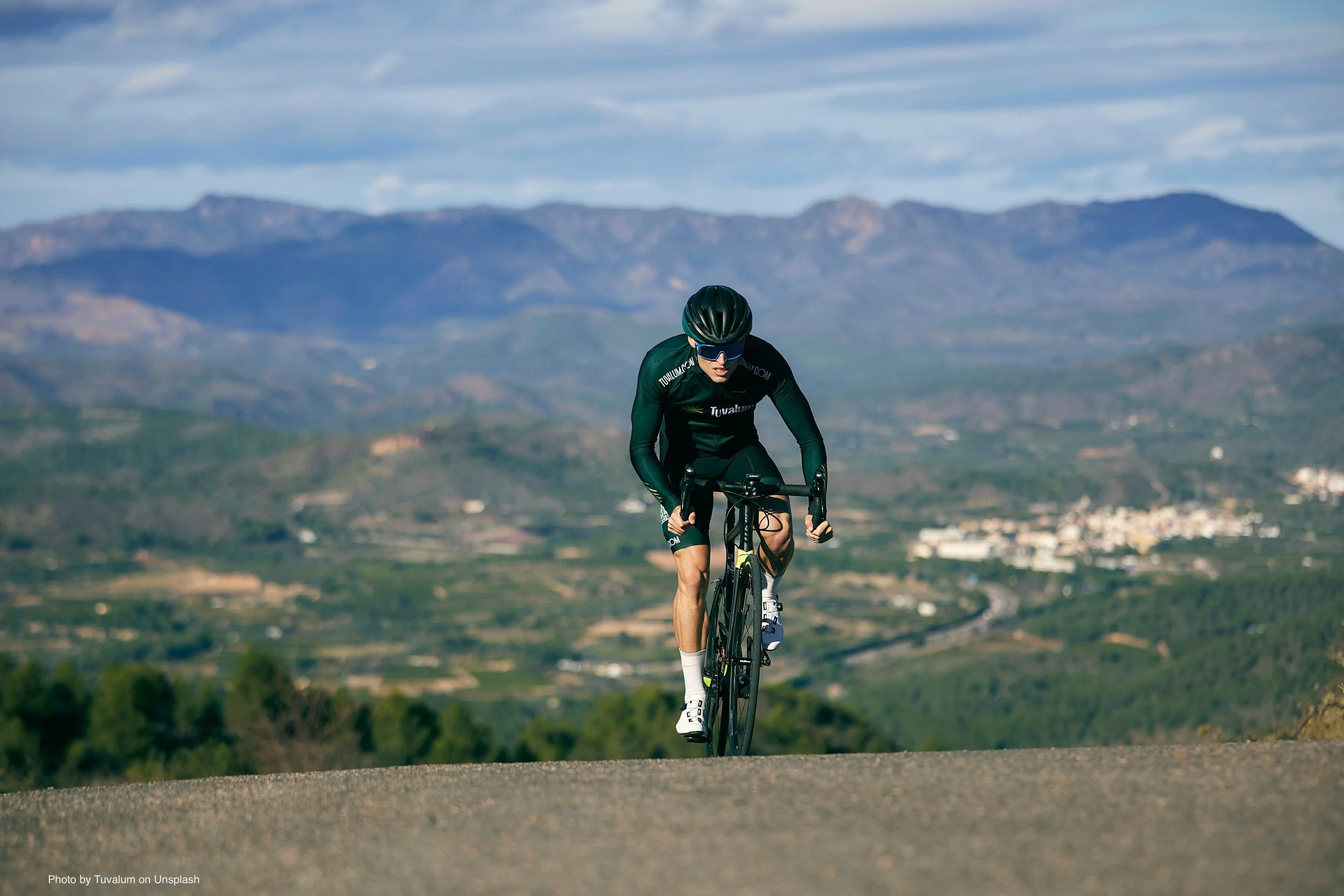Goal Setting For Cyclists: Setting & Achieving Your Hill Climbing Ambitions
If you’re like me, you’ve been here before… You're halfway up a climb you've been planning to nail for months but your legs are screaming, your lungs are burning and you're wondering what’s gone wrong to make it so hard? Sound familiar?
Here's the thing: most cyclists approach hill climbing like they're throwing darts blindfolded. They pick a random hill, give it a crack, and hope for the best. But the cyclists who consistently crush their climbing goals have got a climbing “system”…
You’ve heard of SMART goals right? Specific; Measurable; Achievable; Relevant; Time-Bound.
Well, here’s my cycling version… The “SMART-C” Goal Setting Framework for climbers.
Specific: Don't just say "I want to get better at climbing." You’ve got to pick ONE hill. You’ve got to know your current time up. And you’ve got to know what time you want. For example: "I want to climb Mount XX’s main ascent in x time”.
Measurable: What's your baseline? Time yourself on your target climb right now – even if it's ugly. And then own it. You can't improve what you don't measure. It will be temporary anyway ;)
Achievable: Here's where most go wrong. They want to knock 10 minutes off a 30-minute climb in a month. Thats huge and you’ll blow up before you even begin. Start with a 30-60 second improvement. Or 10% if you’re ambitious. Trust me, that's significant progress.
Relevant: Choose climbs that matter to you. If you're training for a sportive with 8% grades, don't train for 15% wall climbs. But if you want to nail your local climb and its got 15% gradients, then absolutely focus your training on that.
Time-bound: Give yourself 6-8 weeks minimum for meaningful improvement. That also how human physiology works! Any shorter and you're setting yourself up for disappointment.
Cycling-specific (the 'C'): Consider weather, bike setup, current fitness base, technique. What do you need to optimize for this specific goal?
Once you’ve set the goal, its time to work on it and make it happen…
The Three-Phase Approach
Phase 1 - Assessment (Week 1): Establish your baseline. Note your time, heart rate, perceived exertion, power output, and technique issues. Capture these. Write them down.
Phase 2 - Progressive Training (Week 2-6): Build your climbing fitness with structured sessions. Focus on strengthening your aerobic base, then add hill repeats, tempo climbs, and technique work. This isn't about suffering more – it's about training smarter.
Phase 3 - Re-Testing (Wk 6) and Refining (Weeks 7+): Return to your target climb and go for your goal attempt. Compare not just the time but also the other assessment metrics you captured.
After your week 6 goal attempt, one of two things will happen:
1. You nailed your climb goal, WOOT! Congrats. Or
2. You missed your goal time. BUT… something will have improved. You’re time will be better or your HR lower, or your power output higher and more sustained… These are all positive and a strong foundation to keep building on. WOOT!
The Reality Check
Here's what I've learned from years of climbing everything from short punchy hills to epic Alpine ascents: the cyclists who succeed are the ones who set realistic goals, work on them systematically, track their progress, and stay consistent.
And if you have a busy schedule, that can actually be to your advantage. Limited training time forces you to be strategic. Three quality 60min climbing sessions per week will trump five longer mediocre focus rides every time!
Your Next Step.
Right now, jot down the answer to this question: "What's one climb I've always wanted to conquer, in what [realistic] time and by when? Make it specific and then go start making it happen.
Ready to turn that goal into reality? I've put together a proven system to help cyclists master their target climbs. Download my free "3 Step Guide To Mastering Any Hill Climb" and discover the exact framework I use to guarantee climbing success – even with limited training time.
